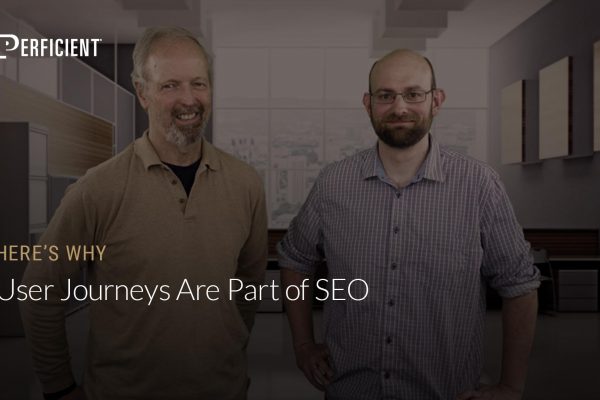User experience is becoming a part of SEO, but why does Google want to use it as a signal in their algorithm?
In this episode of the award-winning Here’s Why digital marketing video series, Brian Weiss explains how Google is using user experience to rank pages.
Don’t miss a single episode of Here’s Why. Click the subscribe button below to be notified via email each time a new video is published.
Resources
Transcript
Brian: Hello there, welcome to my woodworking store. What kind of tools would you like to buy today?
Eric: Actually, I saw you had a sign outside that I could learn how to build a table here.
Brian: Yes, people love tables. The first table was most likely, flat rock of some kind. But today, people use tools to make tables. So, the first thing you’ll need is a bunch of tools like this band saw and disc sander. Now, would you like to buy these now or should I just add them to your cart so you can continue to browse?
Eric: Well, no, I’m not sure I really want to buy anything. I just wanted to know really, what’s involved. I’ve got some time this summer and…
Brian: Hey, would you like to sign up for my newsletter to get the hottest deals on the best tools around?
Eric: Like I said, I’m not really sure I want to buy anything right now.
Brian: Okay, so you’re sure you want to miss out on all these great savings?
Eric: Yes… No, thanks.
Brian: Okay, it’s no problem. All I need, if you don’t want the newsletter, I just need you to sign right here, write, “I don’t care about saving money,” and then sign your name and write your email address and phone number.
Eric: No, thanks. See you.
Brian: User journeys are becoming part of SEO, here’s why. So, it seemed like when you walked into my store that there really wasn’t a chance you’re gonna buy anything.
Eric: Yes, that’s right. There’s some steps in between thinking that maybe building a table would be fun and being ready to spending thousands of dollars on equipment.
Brian: Yes. And we call those steps the user journey, which is basically the path between having an awareness of a problem or a potential need, and then doing all the research needed to get comfortable spending money on a solution to that problem.
Eric: Right. And of course, the user journey can vary greatly. For instance, someone shopping for a car might read 20 articles or visit three dealerships in person for making decision. Whereas for someone who buys a T-shirt, it might be an impulse purchase where the journey starts and ends when they see a shirt they like, and they just go ahead and buy it.
Brian: Yes. And of course, while the cost of the item is a driver, it’s definitely not the only factor in the length of the journey. You might have some people who do three hours of research before they buy a toothbrush.
Eric: Yes, that’s true. But what does all this have to do with SEO?
Brian: I think we can all agree that it’s a major factor in user experience. So, you might wanna review the last video that we did on why user experience is such an important part of SEO.
Eric: Yes, that will be linked to in the description below.
Brian: That seems reasonable.
Eric: Yes, it does.
Brian: The other aspect I wanted to talk about is keyword research. In the SEO industry, we often try to find every keyword with any kind of volume related to our topic and make a page for it. So while it’s good to see what users are searching for and create content to fill that demand, you have to actually understand what their demand is.
Eric: So, I think what you’re saying is, you need to understand what point of the journey they’re at when they enter a particular query.
Brian: That’s right. If someone is in the research phase, and you’re giving them a bunch of conversion-focused content, they’re not going to find it very helpful, and it makes a bad first impression of your site.
Eric: Whereas if you answer some of their questions, and help them get to the next step of their journey, they’re going be more likely to consider you when they are ready to make a purchase.
Brian: Totally. If someone helps us, we generally want to return the favor.
Eric: That’s all well and good, but how do we anticipate where our users are in their journey?
Brian: One way is to look at the results that rank well for a particular query. If they’re primarily informational, then it like really represents an earlier step. But the best way to understand your users’ process is to actually talk to them and ask them questions about it.
Eric: That seems like a lot of work.
Brian: It certainly can be a big project but the insights you get from it can lead to breakthroughs that don’t happen otherwise.
Eric: Agreed. As we’ve gotten into doing more and more of this work for our clients, it really does seem to make a difference. So, I suppose you have some sort of clever ending plan for this?
Brian: No. Thanks for watching.
Eric: See you.
Don’t miss a single episode of Here’s Why. Click the subscribe button below to be notified via email each time a new video is published.
See all of our Here’s Why Videos | Subscribe to our YouTube Channel
